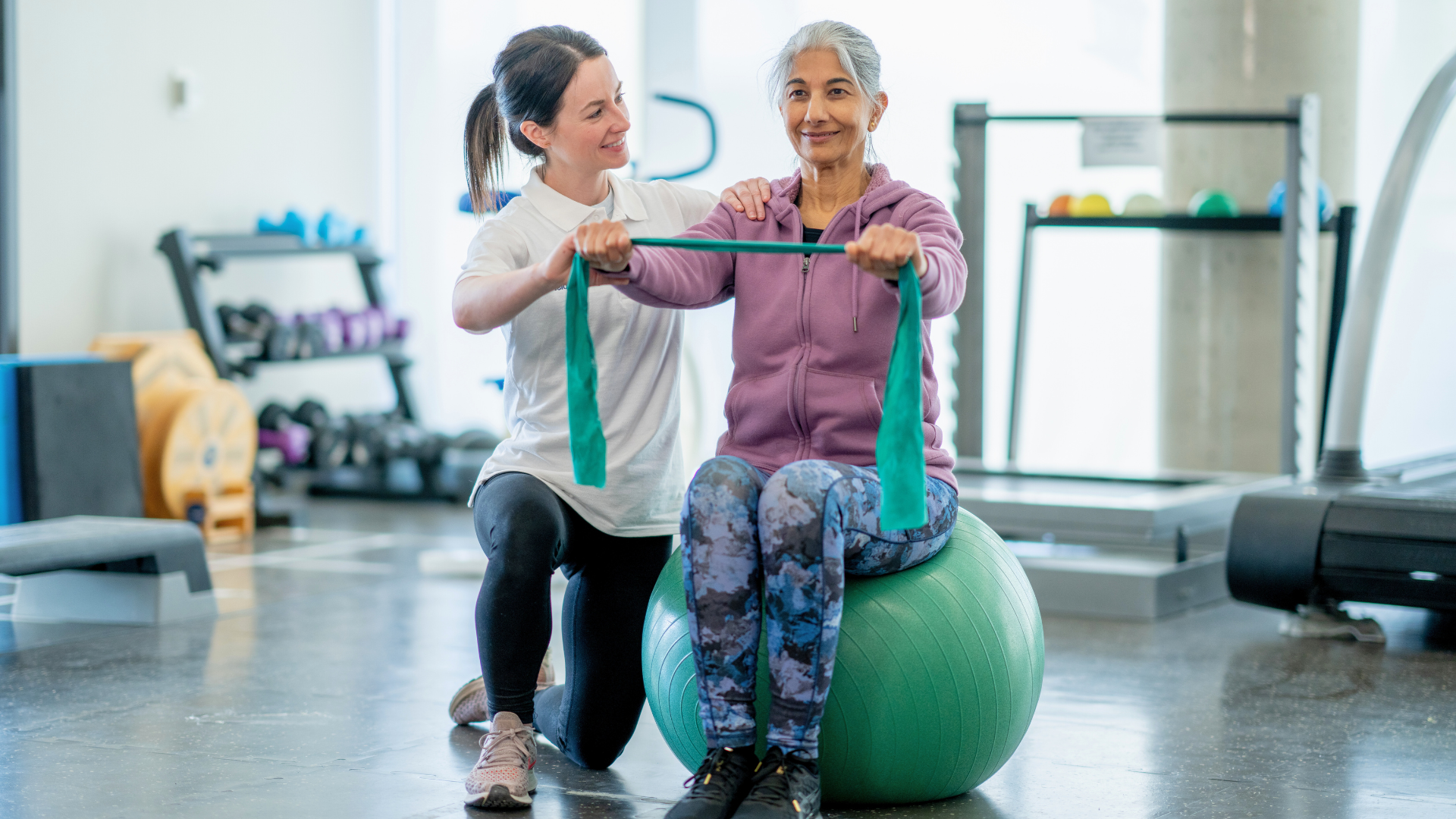The Role of Exercise and Kinesiologists in Preventing Chronic Disease and Alleviating Healthcare Burden in Alberta, Canada
Introduction:
Chronic diseases impose a substantial burden on healthcare systems globally, with sedentary lifestyles contributing significantly to their prevalence. In Alberta, Canada, sedentary behaviours have become alarmingly common, leading to a surge in chronic disease incidence and healthcare costs. This report delves into the importance of exercise and physical activity in preventing chronic diseases, the challenges physicians face in promoting physical activity, and the potential role of kinesiologists and clinical exercise physiologists in mitigating these challenges.
Importance of Exercise and Physical Activity in Preventing Chronic Disease:
Physical activity is essential for maintaining overall health and preventing chronic diseases. According to statistics from Alberta Health Services, sedentary behaviour is a significant risk factor for chronic diseases, with approximately 36% of Albertans reporting low physical activity levels. This places a substantial burden on the healthcare system, contributing to increased healthcare costs associated with managing chronic conditions.
The Canadian Physical Activity Guidelines recommend that adults aim for at least 150 minutes of moderate to vigorous physical activity weekly to achieve health benefits. However, Canadian Community Health Survey data indicates that approximately 66% of adults and 28% of youth do not meet the recommended physical activity guidelines. Insufficient physical activity is a proven risk factor for the development of chronic diseases, including obesity, type 2 diabetes, hypertension, and coronary artery disease.
Statistics on Sedentary Behaviours and Healthcare Burden in Alberta:
In Alberta, sedentary lifestyles are pervasive, contributing to the high incidence of chronic diseases. According to the Alberta Health Services, approximately 62% of adults in Alberta are considered overweight or obese, and only 55% meet the recommended levels of physical activity. This sedentary behaviour contributes to the increasing burden on the healthcare system, with chronic diseases accounting for approximately 80% of healthcare expenditures in the province.
Impact of Physical Activity on Chronic Disease Incidence:
Regular physical activity has been shown to significantly reduce the risk of developing chronic diseases. For instance, a meta-analysis published in the British Medical Journal found that physically active individuals have a 30-40% lower risk of developing type 2 diabetes compared to sedentary individuals. Similar reductions in the incidence of cardiovascular diseases and certain cancers have been observed among physically active individuals.
Challenges Faced by Physicians in Promoting Physical Activity:
Physicians are critical in promoting physical activity and lifestyle interventions to manage chronic conditions. However, time constraints and competing priorities often limit their ability to provide comprehensive exercise and physical activity counselling. Many physicians report needing to be more adequately trained in exercise prescription and lifestyle interventions, further hindering their effectiveness in promoting physical activity among patients.
Role of Kinesiologists and Clinical Exercise Physiologists:
Kinesiologists and clinical exercise physiologists are allied healthcare professionals specialized in exercise prescription and rehabilitation. In Alberta, Certified Exercise Physiologists (CEPs) certified by the Canadian Society for Exercise Physiology (CSEP) and Professional Kinesiologists (PKs) certified by the Alberta Kinesiology Association play a crucial role in promoting physical activity and managing chronic conditions.
Education and Scope of Practice of CSEP-CEP and Professional Kinesiologists in Alberta:
CSEP-CEPs undergo rigorous education and training, including a bachelor's degree in kinesiology or related fields, followed by certification through the CSEP. They are trained to assess individuals' health status, develop personalized exercise prescriptions, and provide ongoing support and monitoring to enhance physical activity adherence and health outcomes. PKs also possess similar education and training, focusing on exercise science and kinesiology principles, and are equipped to work with individuals of all ages and levels of complexity in their disease process.
Integration of Kinesiologists and Clinical Exercise Physiologists in the Healthcare System:
Kinesiologists and clinical exercise physiologists support the work of physicians by offering customized exercise programs tailored to individual needs and abilities. They can be found in various healthcare settings, such as primary care clinics, rehabilitation centers, and community health programs, where they collaborate closely with physicians to provide comprehensive care to patients with chronic conditions. The exercise specialists at Hyperion Exercise and Health have master's training and hold dual certifications, including the Alberta Kinesiology Association - Professional Kinesiologist designation and the Canadian Society for Exercise Physiology - Clinical Exercise Physiologist designation. Our practitioners are particularly well-informed and experienced in managing the care of patients with one or more stable chronic medical conditions, as well as prescribing exercise for musculoskeletal injury rehabilitation and chronic pain management.
Hyperion Exercise and Health's Role in Facilitating Physical Activity:
Hyperion Exercise and Health understands the challenges patients face in promptly accessing exercise interventions. We aim to help patients avoid long wait times to consult an exercise specialist within the Primary Care Network (PCN). Patients often lose motivation or urgency to get active when faced with several weeks to month-long wait times for consultation within the PCN, especially those in the pre-contemplation, contemplation, or preparation stages of behaviour change. By reducing wait times, we ensure that the motivation or urgency to get active is preserved. Our secure tele-health system provides direct and immediate access to our team of master's trained professional kinesiologists and clinical exercise physiologists. Our team offers personalized exercise and lifestyle programming, ensuring safe and effective interventions to help patients become physically active and manage chronic conditions at a low cost. Some extended health benefits providers may also cover kinesiology or exercise physiology services. By bridging the gap between patients and exercise professionals, we aim to empower individuals to lead healthier lives and alleviate the burden on the healthcare system.
Conclusion:
Exercise and physical activity are paramount in preventing chronic diseases and reducing healthcare burden in Alberta, Canada. Despite physicians' challenges in promoting physical activity, kinesiologists and clinical exercise physiologists offer a viable solution by providing specialized exercise interventions and support to individuals with chronic conditions. By leveraging the expertise of exercise professionals and innovative approaches such as telehealth services, we can enhance access to exercise interventions and improve health outcomes for individuals across the province.
References:
- Alberta Health Services. (2020). Physical Activity in Alberta: A snapshot of current behaviours. Retrieved from https://www.albertahealthservices.ca/assets/info/public/health-res-prov-physical-activity-in-alberta.pdf
- Alberta Health Services. (n.d.). Alberta's Obesity Strategy. Retrieved from https://www.albertahealthservices.ca/strategicdirections/priorities/obesity.aspx
- American College of Sports Medicine. (2020). ACSM's Guidelines for Exercise Testing and Prescription. Wolters Kluwer.
- Canadian Physical Activity Guidelines. (2020). Retrieved from https://csepguidelines.ca/
- Canadian Society for Exercise Physiology. (n.d.). CSEP-CEP Certification. Retrieved from https://www.csep.ca/education/certification/csep-cep-certification
- Colberg, S. R., Sigal, R. J., Fernhall, B., Regensteiner, J. G., Blissmer, B. J., Rubin, R. R., ... & Braun, B. (2010). Exercise and type 2 diabetes: the American College of Sports Medicine and the American Diabetes Association: joint position statement executive summary. Diabetes care, 33(12), 2692-2696.
- Statistics Canada. (2020). Physical activity during the COVID-19 pandemic. Retrieved from https://www150.statcan.gc.ca/n1/pub/11-627-m/11-627-m2020038-eng.htm
- Warburton, D. E., Nicol, C. W., & Bredin, S. S. (2006). Health benefits of physical activity: the evidence. Canadian medical association journal, 174(6), 801-809.
An Ounce of Prevention - Hyperion Health Blog




